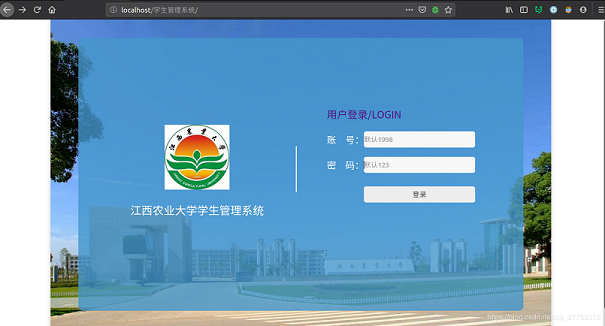Python函數(shù)裝飾器的使用教程
以下示例定義了一個裝飾器,輸出函數(shù)的運行時間:

函數(shù)裝飾器和閉包緊密結合,入?yún)unc代表被裝飾函數(shù),通過自由變量綁定后,調(diào)用函數(shù)并返回結果。
使用clock裝飾器:
import timefrom clockdeco import clock@clockdef snooze(seconds): time.sleep(seconds)@clockdef factorial(n): return 1 if n < 2 else n*factorial(n-1)if __name__==’__main__’: print(’*’ * 40, ’Calling snooze(.123)’) snooze(.123) print(’*’ * 40, ’Calling factorial(6)’) print(’6! =’, factorial(6)) # 6!指6的階乘
輸出結果:

這是裝飾器的典型行為:把被裝飾的函數(shù)換成新函數(shù),二者接受相同的參數(shù),而且返回被裝飾的函數(shù)本該返回的值,同時還會做些額外操作。
值得注意的是factorial()是個遞歸函數(shù),從結果來看,每次遞歸都用到了裝飾器,打印了運行時間,這是因為如下代碼:
@clockdef factorial(n): return 1 if n < 2 else n*factorial(n-1)
等價于:
def factorial(n): return 1 if n < 2 else n*factorial(n-1) factorial = clock(factorial)
factorial引用的是clock(factorial)函數(shù)的返回值,也就是裝飾器內(nèi)部函數(shù)clocked,每次調(diào)用factorial(n),執(zhí)行的都是clocked(n)。
疊放裝飾器@d1@d2def f(): print('f')
等價于:
def f(): print('f')f = d1(d2(f))參數(shù)化裝飾器
怎么讓裝飾器接受參數(shù)呢?答案是:創(chuàng)建一個裝飾器工廠函數(shù),把參數(shù)傳給它,返回一個裝飾器,然后再把它應用到要裝飾的函數(shù)上。
示例如下:
registry = set()def register(active=True): def decorate(func):print(’running register(active=%s)->decorate(%s)’ % (active, func))if active: registry.add(func)else: registry.discard(func)return func return decorate@register(active=False)def f1(): print(’running f1()’)# 注意這里的調(diào)用@register()def f2(): print(’running f2()’)def f3(): print(’running f3()’)
register是一個裝飾器工廠函數(shù),接受可選參數(shù)active默認為True,內(nèi)部定義了一個裝飾器decorate并返回。需要注意的是裝飾器工廠函數(shù),即使不傳參數(shù),也要加上小括號調(diào)用,比如@register()。
再看一個示例:
import timeDEFAULT_FMT = ’[{elapsed:0.8f}s] {name}({args}) -> {result}’# 裝飾器工廠函數(shù)def clock(fmt=DEFAULT_FMT): # 真正的裝飾器 def decorate(func): # 包裝被裝飾的函數(shù)def clocked(*_args): t0 = time.time() # _result是被裝飾函數(shù)返回的真正結果 _result = func(*_args) elapsed = time.time() - t0 name = func.__name__ args = ’, ’.join(repr(arg) for arg in _args) result = repr(_result) # **locals()返回clocked的局部變量 print(fmt.format(**locals())) return _result return clocked return decorate if __name__ == ’__main__’: @clock() def snooze(seconds):time.sleep(seconds) for i in range(3):snooze(.123)
這是給典型的函數(shù)裝飾器添加了參數(shù)fmt,裝飾器工廠函數(shù)增加了一層嵌套,示例中一共有3個def。
標準庫中的裝飾器Python內(nèi)置了三個用于裝飾方法的函數(shù):property、classmethod和staticmethod,這會在將來的文章中講到。本文介紹functools中的三個裝飾器:functools.wraps、functools.lru_cache和functools.singledispatch。
functools.wrapsPython函數(shù)裝飾器在實現(xiàn)的時候,被裝飾后的函數(shù)其實已經(jīng)是另外一個函數(shù)了(函數(shù)名等函數(shù)屬性會發(fā)生改變),為了不影響,Python的functools包中提供了一個叫wraps的裝飾器來消除這樣的副作用(它能保留原有函數(shù)的名稱和函數(shù)屬性)。
示例,不加wraps:
def my_decorator(func): def wrapper(*args, **kwargs):’’’decorator’’’print(’Calling decorated function...’)return func(*args, **kwargs) return wrapper@my_decoratordef example(): '''Docstring''' print(’Called example function’)print(example.__name__, example.__doc__)# 輸出wrapper decorator
加wraps:
import functoolsdef my_decorator(func): @functools.wraps(func) def wrapper(*args, **kwargs):’’’decorator’’’print(’Calling decorated function...’)return func(*args, **kwargs) return wrapper@my_decoratordef example(): '''Docstring''' print(’Called example function’)print(example.__name__, example.__doc__)# 輸出example Docstringfunctools.lru_cache
lru是Least Recently Used的縮寫,它是一項優(yōu)化技術,把耗時的函數(shù)的結果保存起來,避免傳入相同的參數(shù)時重復計算。
示例:
import functoolsfrom clockdeco import clock@functools.lru_cache()@clockdef fibonacci(n): if n < 2:return n return fibonacci(n-2) + fibonacci(n-1)if __name__==’__main__’: print(fibonacci(6))
優(yōu)化了遞歸算法,執(zhí)行時間會減半。
注意,lru_cache可以使用兩個可選的參數(shù)來配置,它的簽名如下:
functools.lru_cache(maxsize=128, typed=False) maxsize:最大存儲數(shù)量,緩存滿了以后,舊的結果會被扔掉。 typed:如果設為True,那么會把不同參數(shù)類型得到的結果分開保存,即把通常認為相等的浮點數(shù)和整型參數(shù)(如1和1.0)區(qū)分開。functools.singledispatch
Python3.4的新增語法,可以用來優(yōu)化函數(shù)中的大量if/elif/elif。使用@singledispatch裝飾的普通函數(shù)會變成泛函數(shù):根據(jù)第一個參數(shù)的類型,以不同方式執(zhí)行相同操作的一組函數(shù)。所以它叫做single dispatch,單分派。
根據(jù)多個參數(shù)進行分派,就是多分派了。
示例,生成HTML,顯示不同類型的Python對象:
import htmldef htmlize(obj): content = html.escape(repr(obj)) return ’<pre>{}</pre>’.format(content)
因為Python不支持重載方法或函數(shù),所以就不能使用不同的簽名定義htmlize的變體,只能把htmlize變成一個分派函數(shù),使用if/elif/elif,調(diào)用專門的函數(shù),比如htmlize_str、htmlize_int等。時間一長htmlize會變得很大,跟各個專門函數(shù)之間的耦合也很緊密,不便于模塊擴展。
@singledispatch經(jīng)過深思熟慮后加入到了標準庫,來解決這類問題:
from functools import singledispatchfrom collections import abcimport numbersimport html@singledispatchdef htmlize(obj): # 基函數(shù) 這里不用寫if/elif/elif來分派了 content = html.escape(repr(obj)) return ’<pre>{}</pre>’.format(content)@htmlize.register(str)def _(text): # 專門函數(shù) content = html.escape(text).replace(’n’, ’<br>n’) return ’<p>{0}</p>’.format(content)@htmlize.register(numbers.Integral) def _(n): # 專門函數(shù) return ’<pre>{0} (0x{0:x})</pre>’.format(n)@htmlize.register(tuple)@htmlize.register(abc.MutableSequence)def _(seq): # 專門函數(shù) inner = ’</li>n<li>’.join(htmlize(item) for item in seq) return ’<ul>n<li>’ + inner + ’</li>n</ul>’
@singledispatch裝飾了基函數(shù)。專門函數(shù)使用@<<base_function>>.register(<<type>>)裝飾,它的名字不重要,命名為_,簡單明了。
這樣編寫代碼后,Python會根據(jù)第一個參數(shù)的類型,調(diào)用相應的專門函數(shù)。
小結本文首先介紹了典型的函數(shù)裝飾器:把被裝飾的函數(shù)換成新函數(shù),二者接受相同的參數(shù),而且返回被裝飾的函數(shù)本該返回的值,同時還會做些額外操作。接著介紹了裝飾器的兩個高級用法:疊放裝飾器和參數(shù)化裝飾器,它們都會增加函數(shù)的嵌套層級。最后介紹了3個標準庫中的裝飾器:保留原有函數(shù)屬性的functools.wraps、緩存耗時的函數(shù)結果的functools.lru_cache和優(yōu)化if/elif/elif代碼的functools.singledispatch。
參考資料:《流暢的Python》https://github.com/fluentpython/example-code/tree/master/07-closure-deco
https://blog.csdn.net/liuzonghao88/article/details/103586634
以上就是Python函數(shù)裝飾器高級用法的詳細內(nèi)容,更多關于Python函數(shù)裝飾器用法的資料請關注好吧啦網(wǎng)其它相關文章!
相關文章:

 網(wǎng)公網(wǎng)安備
網(wǎng)公網(wǎng)安備